Find Help
More Items From Ergsy search
-
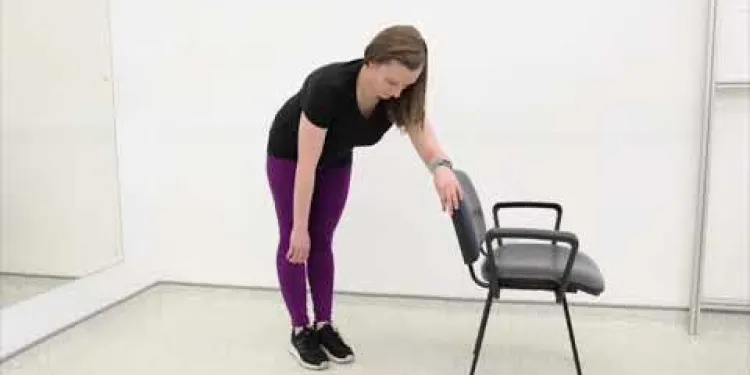
Frozen shoulder Pendular Exercises
Relevance: 100%
-

Frozen Shoulder Anterior Shoulder Stretch
Relevance: 56%
-

Frozen Shoulder Lateral Rotation
Relevance: 55%
-
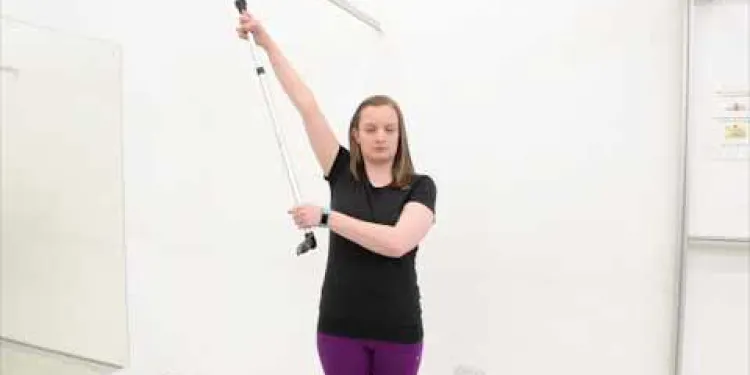
Frozen Shoulder Assisted Abduction
Relevance: 55%
-

Frozen Shoulder Scapular Setting
Relevance: 55%
-
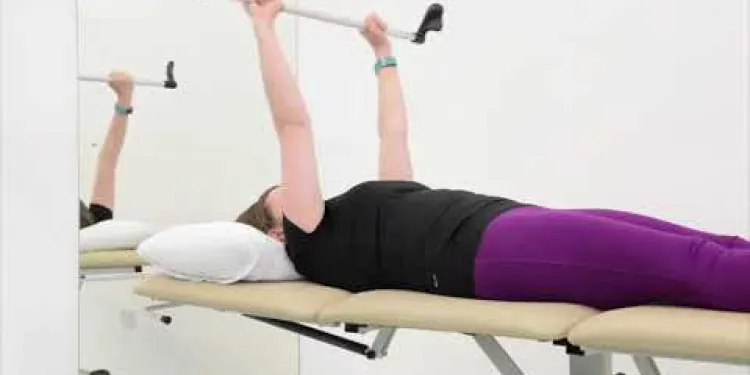
Frozen Shoulder Assisted Flexion
Relevance: 55%
-
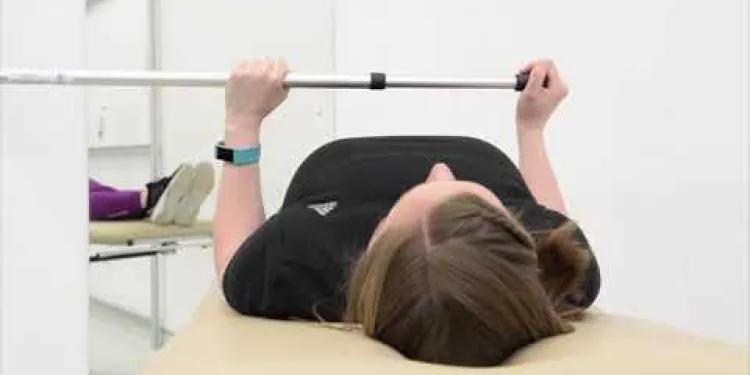
Frozen Shoulder Assisted Lateral Rotation
Relevance: 52%
-
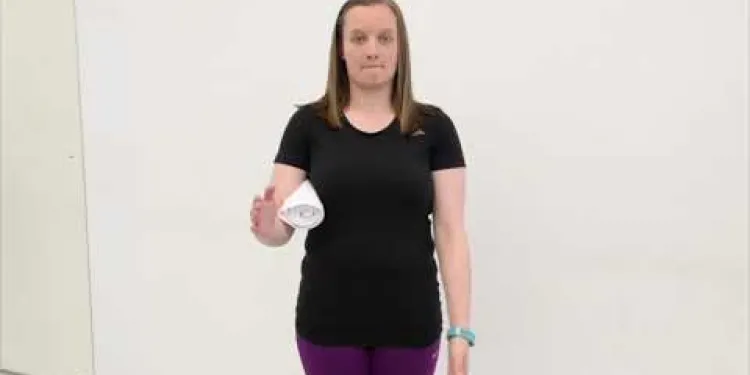
Frozen Shoulder Isometric External Rotation
Relevance: 52%
-
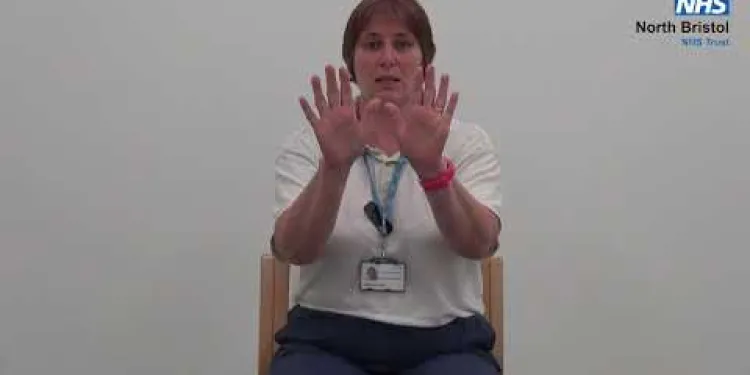
Shoulder Exercises 1
Relevance: 43%
-
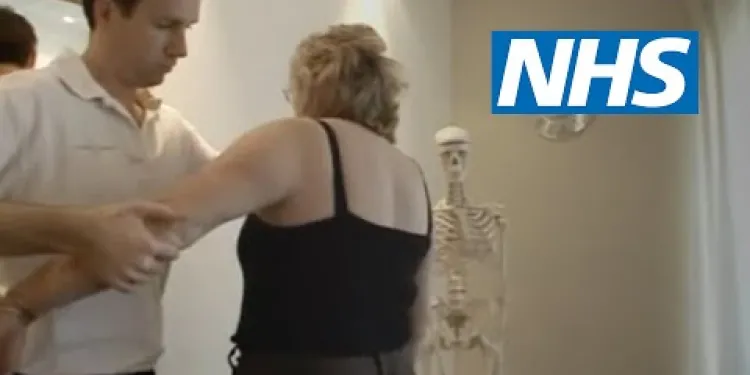
Shoulder pain | NHS
Relevance: 37%
-
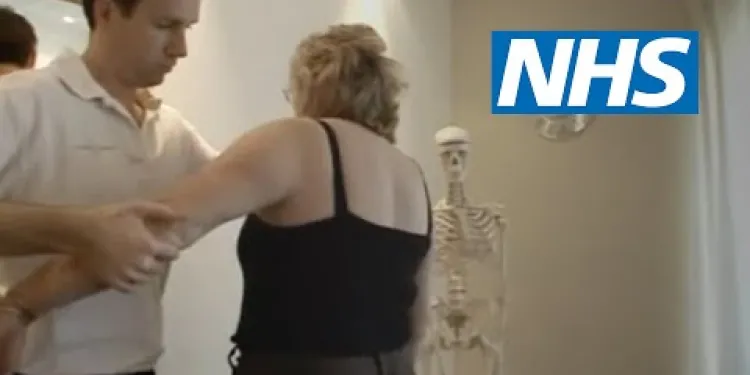
Shoulder pain | NHS
Relevance: 36%
-

Shoulder subacromial shoulder pain
Relevance: 31%
-
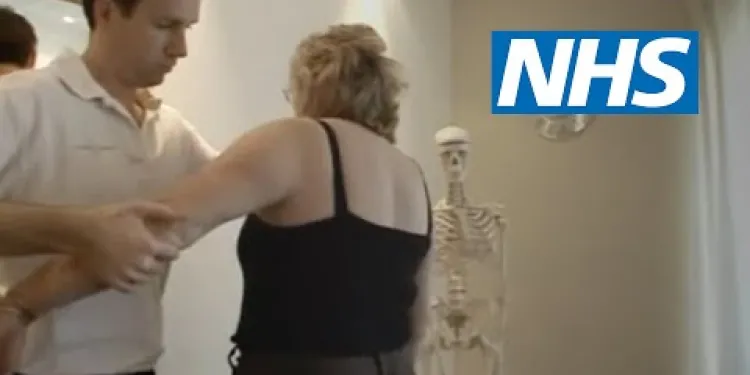
Shoulder pain | NHS
Relevance: 30%
-
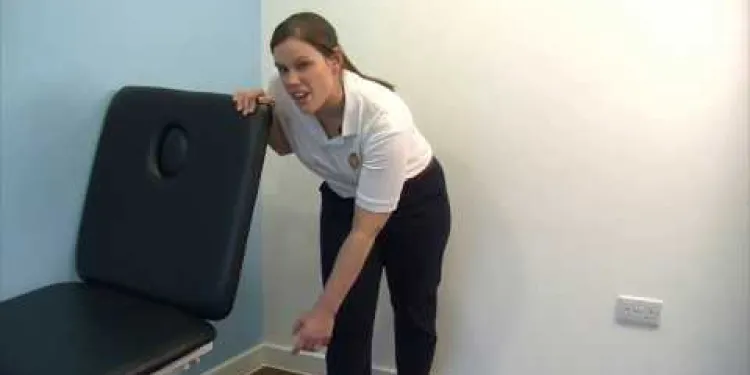
DBTH VFC DISLOCATED SHOULDER
Relevance: 27%
-

Unfreezing the Truth The UK's Frozen Pensions
Relevance: 25%
-

Neck Exercises
Relevance: 24%
-

Neck Care Exercises
Relevance: 23%
-

Neck Exercises
Relevance: 22%
-
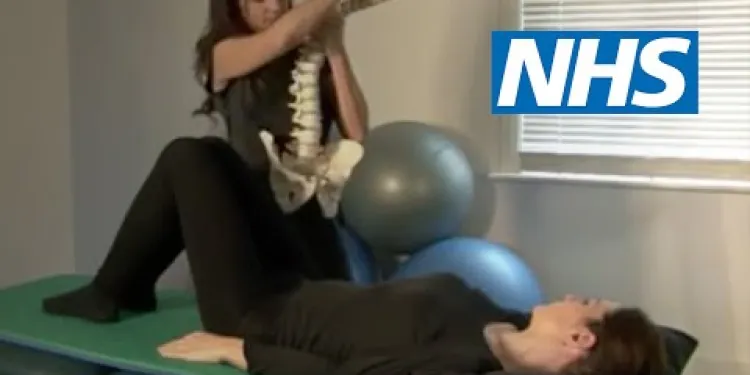
Exercises for sciatica: herniated or slipped disc | NHS
Relevance: 17%
-
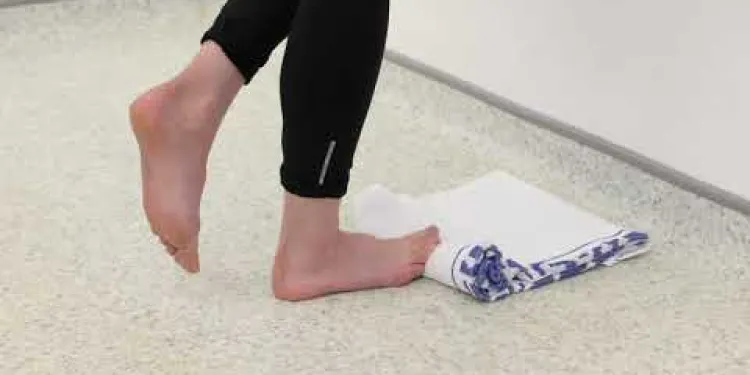
Plantar Fascia Loading Exercise (High Load Exercise)
Relevance: 16%
-

Facial exercise programme
Relevance: 15%
-
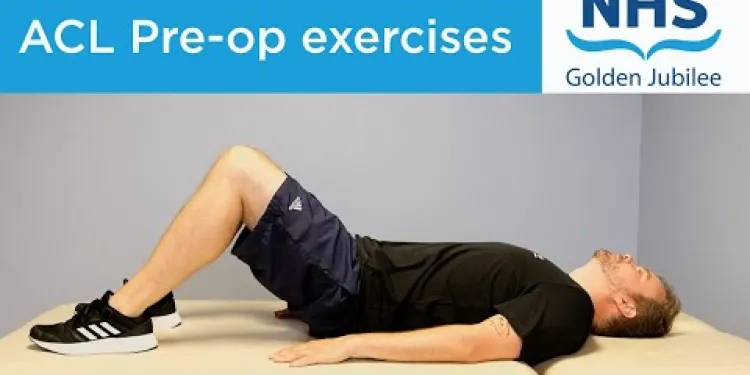
ACL pre-operation exercises
Relevance: 15%
-
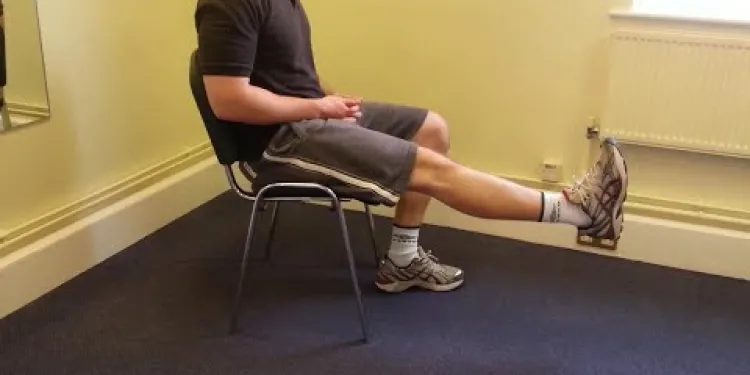
Knee Care Exercises
Relevance: 15%
-
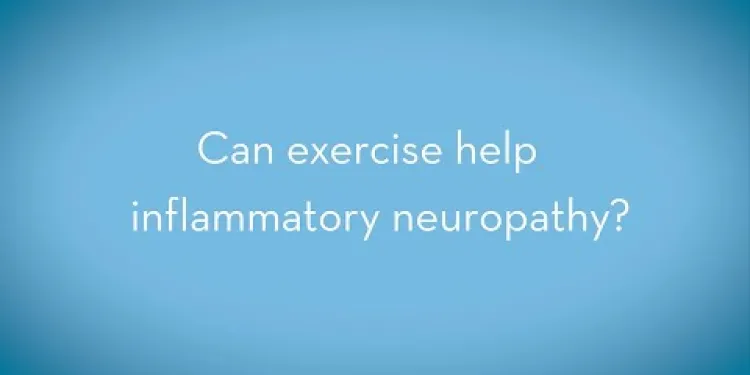
Exercise in patients with a neuropathy
Relevance: 15%
-

Is it safe to exercise with a cold?
Relevance: 15%
-
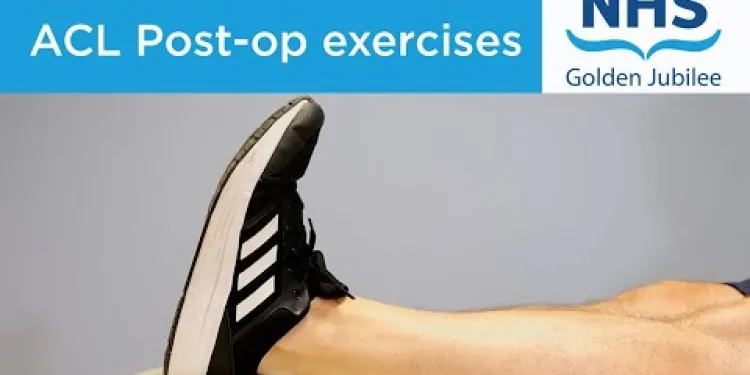
ACL exercises post-operation
Relevance: 15%
-
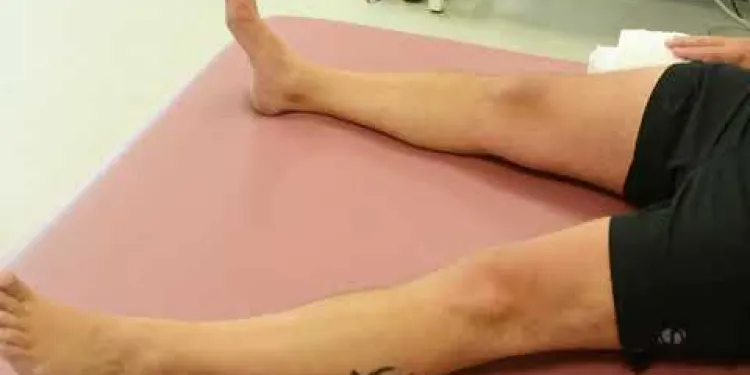
Joint School - Hip Exercises
Relevance: 14%
-

Joint School - Knee Exercises
Relevance: 14%
-

Will I be able to engage in physical exercise?
Relevance: 14%
-
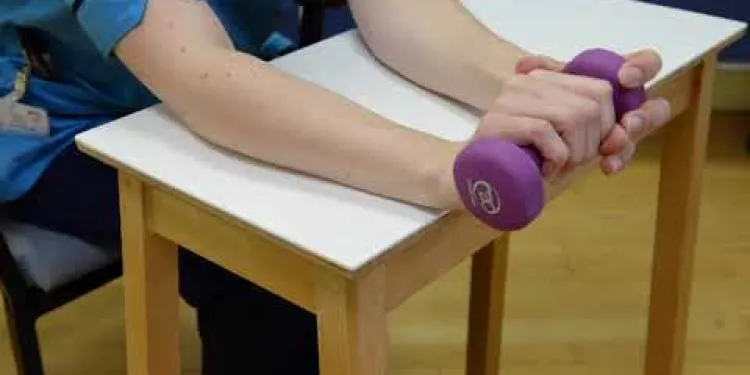
Elbow Eccentric Strengthening Exercise
Relevance: 14%
-

Exercise Routines for Busy Parents
Relevance: 14%
-

Can exercises help with labor preparation?
Relevance: 14%
-

Are there any exercises involved in air physiotherapy?
Relevance: 14%
-

How does exercise benefit pregnancy?
Relevance: 14%
-

Falls Prevention - strength and balance exercises
Relevance: 14%
-

Can exercise influence cortisol levels?
Relevance: 14%
-

Can I do high-impact exercises while pregnant?
Relevance: 14%
-

Can I do abdominal exercises during pregnancy?
Relevance: 14%
-
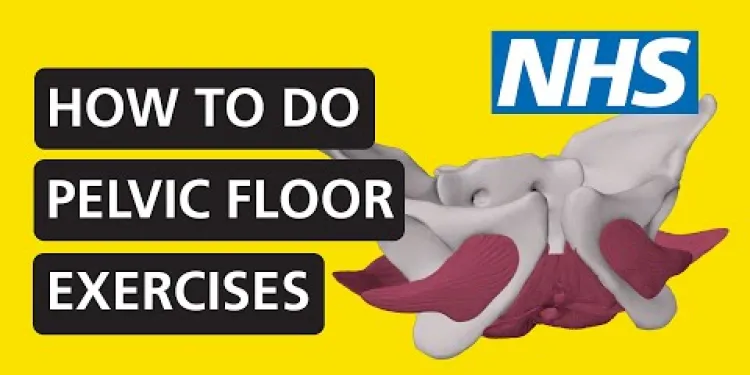
How to do pelvic floor exercises | NHS
Relevance: 14%
-

Is it safe to exercise outside during a heatwave?
Relevance: 14%
Understanding Frozen Shoulder and Pendular Exercises
Introduction to Frozen Shoulder
Frozen shoulder, also known as adhesive capsulitis, is a condition characterized by stiffness and pain in the shoulder joint. It commonly affects people aged 40 to 60 and is more prevalent in women than men. The exact cause remains unclear, but it often occurs after an injury or surgery, or as a result of conditions such as diabetes and thyroid disorders. If you're experiencing restricted shoulder movement, frozen shoulder could be the underlying issue.Importance of Pendular Exercises
Pendular exercises are gentle, effective movements designed to mobilize the shoulder joint without causing pain. These exercises are particularly beneficial for those suffering from a frozen shoulder as they help to reduce stiffness, improve range of motion, and enhance circulation within the joint. By incorporating pendular exercises into your daily routine, you can significantly alleviate symptoms and potentially speed up recovery.How to Perform Pendular Exercises
Pendular exercises can be performed in the comfort of your own home. Here's a step-by-step guide to ensure you're doing them correctly: 1. **Starting Position**: Stand beside a sturdy table or counter and lean forward slightly, supporting yourself with the unaffected arm. Your affected arm should dangle loosely. 2. **Small Circles**: Begin by gently swinging your affected arm in small circles, allowing gravity to help with the movement. Perform 10 circles in a clockwise direction, followed by 10 circles counterclockwise. 3. **Side-to-Side Swings**: Next, swing your arm slowly side-to-side, ensuring you keep the motion smooth and controlled. Repeat this movement 10 times. 4. **Forward and Backward Swings**: Lastly, swing your affected arm forward and backward in a gentle pendular motion. Perform this for another 10 repetitions.Precautions and Tips
While pendular exercises are generally safe, it's crucial to perform them correctly: - **Avoid Pain**: Ensure the exercises do not cause any pain. Mild discomfort is acceptable, but stop immediately if you experience sharp or increasing pain. - **Stay Consistent**: Aim to do these exercises daily to notice improvement in flexibility and pain reduction. - **Warm-Up**: Consider warming up the shoulder with a warm compress or gentle massage before starting the exercises. - **Consult a Professional**: If unsure about performing the exercises correctly, seek guidance from a physiotherapist. They can provide personalized instructions and ensure you're on the right track.Conclusion
Pendular exercises are a simple yet effective way to manage frozen shoulder symptoms. By incorporating them into your daily routine, you can gradually restore shoulder mobility and reduce pain. However, it's essential to perform these exercises carefully and consult with a healthcare professional if needed. With patience and consistency, pendular exercises can significantly contribute to the recovery process and improve your quality of life.Understanding Frozen Shoulder and Pendular Exercises
Introduction to Frozen Shoulder
A frozen shoulder is when your shoulder feels stiff and painful. It happens when the joint is hard to move. People who are 40 to 60 years old may get it. Women get it more than men. We don't know exactly why it happens. It might happen after an injury or surgery. It can also happen if you have diabetes or thyroid problems. If your shoulder is stiff and hard to move, you might have a frozen shoulder.Importance of Pendular Exercises
Pendular exercises are gentle moves to help your shoulder. They help make the shoulder less stiff and improve how it moves. These exercises can help with a frozen shoulder. Doing them daily can help ease the pain and help you heal faster.How to Perform Pendular Exercises
You can do pendular exercises at home. Follow these steps: 1. **Starting Position**: Stand next to a strong table or counter. Lean forward a bit. Support yourself with your good arm. Let your sore arm hang down. 2. **Small Circles**: Gently swing your sore arm in small circles. Let gravity help you. Do 10 circles going clockwise, then 10 counterclockwise. 3. **Side-to-Side Swings**: Slowly swing your arm side to side. Keep the movement smooth. Do this 10 times. 4. **Forward and Backward Swings**: Swing your sore arm forward and back like a pendulum. Do this 10 times.Precautions and Tips
Be careful when doing pendular exercises: - **Avoid Pain**: Do the exercises gently. Stop if you feel sharp or strong pain. - **Stay Consistent**: Try to do these exercises every day. It will help you feel better over time. - **Warm-Up**: You can warm up with a warm cloth on your shoulder or a gentle massage before starting. - **Consult a Professional**: If you're not sure how to do the exercises, ask a physiotherapist. They can show you the right way.Conclusion
Pendular exercises are a good way to help a frozen shoulder. Doing them every day can help your shoulder move better and hurt less. Make sure to do the exercises carefully. If you need help, ask a healthcare person. With time and regular practice, these exercises can help you get better and feel better.Frequently Asked Questions
What is a frozen shoulder?
A frozen shoulder, also known as adhesive capsulitis, is a condition characterized by stiffness and pain in the shoulder joint. It typically develops gradually and can significantly limit shoulder movement.
What are pendular exercises?
Pendular exercises are gentle, swinging arm movements that help to maintain mobility and reduce stiffness in the shoulder joint. They are often recommended for patients with frozen shoulder.
How do you perform pendular exercises?
To perform pendular exercises, lean forward slightly and let the affected arm hang down. Gently swing the arm in small circles, forward and backward, or side to side. Do these motions for about 2-3 minutes, several times a day.
Can pendular exercises cause pain?
Pendular exercises should not cause significant pain. You may experience some discomfort, but it should be tolerable. If the exercises cause sharp or intense pain, you should stop and consult your healthcare provider.
How often should pendular exercises be done?
Pendular exercises can be done multiple times a day, depending on your comfort and tolerance level. It’s generally recommended to perform them 3-5 times daily.
Are pendular exercises suitable for everyone with frozen shoulder?
Pendular exercises are generally safe for most people with frozen shoulder. However, always consult your healthcare provider before starting any new exercise regimen to ensure it’s appropriate for your specific condition.
Do pendular exercises help in all stages of frozen shoulder?
Yes, pendular exercises can be beneficial in all stages of frozen shoulder, including the freezing, frozen, and thawing stages. However, the intensity and range of motion may need to be adjusted according to the stage and severity of your condition.
How long does it take to see improvement with pendular exercises?
The time it takes to see improvement can vary. Some individuals may notice reduced stiffness and pain after a few weeks, while others might require several months of consistent exercise to see significant improvement.
Can I do pendular exercises after surgery?
If you’ve had shoulder surgery, consult your surgeon or physical therapist before starting pendular exercises. They can guide you on when and how to safely begin these exercises postoperatively.
Can pendular exercises prevent frozen shoulder?
While there’s no guaranteed way to prevent frozen shoulder, maintaining shoulder mobility through regular gentle exercises, including pendular exercises, might help reduce your risk.
What should I do if pendular exercises don’t improve my frozen shoulder?
If you don’t notice improvement after consistently performing pendular exercises, consult your healthcare provider. They may recommend additional treatments such as physical therapy, medications, or even surgical options.
Should pendular exercises be combined with other treatments?
Yes, pendular exercises can be combined with other treatments such as physical therapy, medication, or hot/cold therapy to manage symptoms and improve shoulder function. Always follow your healthcare provider’s recommendations.
What are the benefits of pendular exercises?
Pendular exercises help to maintain shoulder mobility, reduce stiffness, alleviate pain, and promote circulation in the affected area, which can aid in the recovery process.
Can I perform pendular exercises on both shoulders?
If both shoulders are affected or you want to maintain mobility in both, you can perform pendular exercises on both shoulders. Ensure to perform the exercises gently to avoid strain.
Do I need any equipment for pendular exercises?
No special equipment is needed for pendular exercises. You simply need a stable surface to support yourself, such as a chair or table, and space to allow your affected arm to swing freely.
What is a frozen shoulder?
A frozen shoulder is when your shoulder gets very stiff and it hurts to move it. It can be hard to lift your arm. A frozen shoulder needs special care from a doctor to get better.
Helpful Tips:
- Rest your shoulder if it hurts.
- Talk to a doctor or a nurse for help.
- A physiotherapist can show you exercises to help.
- Using a heat pad may ease the pain.
A frozen shoulder is when your shoulder gets stiff and hurts. It can also be called adhesive capsulitis. This means it's hard to move your shoulder. It happens slowly over time.
What are pendular exercises?
Pendular exercises are small arm movements. You swing your arm gently like a clock. These exercises help with shoulder pain or after shoulder surgery. You can do them at home.
Here are some steps to do pendular exercises:
- Stand and lean forward a little bit.
- Let your arm hang down towards the floor.
- Make small circles with your hand.
- Do this for a few minutes. Change direction after a while.
You might find it helpful to have someone show you how to do them. Watching a video can also help. Talk to a doctor or a therapist before starting any new exercises. They can guide you safely.
Pendular exercises help your shoulder. You move your arm gently, like a swing. These exercises stop your shoulder from getting stiff. Doctors often say to do them if you have a frozen shoulder.
How do you do pendular exercises?
Pendular exercises are easy movements for your shoulder. They help when your shoulder is stiff or hurts.
Here is how you can do them:
- Stand next to a table. Put your good hand on the table to help you.
- Let your sore arm hang down.
- Swing your sore arm in a gentle circle. It should go small and slow.
- Do this for a few minutes.
Try to do these every day to help your shoulder feel better!
To make it easier, ask a friend to help you remember the steps or watch a video of how to do them.
To do the exercises, lean a bit forward. Let your sore arm hang down. Move your arm in slow circles. You can also move it forward and backward, or from side to side. Do this for 2-3 minutes. Try to do it a few times every day.
If you need help, try using a timer to keep track of the time. You can also listen to calm music to feel relaxed while doing the exercise.
Can swinging exercises hurt?
Pendular exercises should not hurt a lot. You might feel a little sore, but it should not be too bad. If the exercises hurt a lot or feel very sharp, you should stop and talk to your doctor.
How often should pendular exercises be done?
How often should you do pendular exercises?
Pendular exercises should be done every day if you can. Try to do these exercises once a day. If it's easy, you can try doing them more times.
If you need help, ask someone to show you how to do it. You can also use a video or a picture guide.
You can do pendular exercises many times each day. It's important to listen to your body and only do what feels comfortable. Most people try to do them 3 to 5 times a day.
Can everyone do pendular exercises if they have a frozen shoulder?
Pendular exercises are safe for most people with a frozen shoulder. But, you should always talk to your doctor before starting any new exercises. This is to make sure the exercises are right for you.
Do pendular exercises help with all stages of frozen shoulder?
Pendular exercises are gentle arm swings. They can help if your shoulder is stiff, like in frozen shoulder. But they might not help everyone the same way.
Here’s how to understand the stages of frozen shoulder:
- **Pain Stage**: You feel a lot of pain and your shoulder gets stiff.
- **Frozen Stage**: Your shoulder is very stiff, but the pain might be less.
- **Thawing Stage**: Your shoulder gets less stiff and moves more again.
These exercises might be more helpful in the frozen and thawing stages. In the pain stage, they might be too painful.
Remember to:
- Talk to a doctor or physiotherapist before trying exercises.
- Use videos or guides to see how to do the exercises.
- Go slowly and stop if it hurts.
Yes, swinging arm exercises can help if you have a frozen shoulder. They can help you at any stage: early, middle, and late stage of frozen shoulder. But you might need to do the exercises more gently if your shoulder hurts a lot.
When will I get better with pendular exercises?
How long it takes to feel better can be different for everyone. Some people might feel less stiff and have less pain after a few weeks. Other people may need to do exercises for several months before they feel much better.
Can I do gentle exercises after my surgery?
Yes, you can do gentle exercises after your surgery. These are special moves to help you heal and feel better. They are called "pendular exercises."
Always ask your doctor if it's okay to start these exercises. They will tell you when it is safe.
You can also use tools like a timer to track how long you do the exercises. A friend or family member can help make sure you do them right.
If any exercise hurts, stop and let your doctor know. They will help you find what is best for you.
If you've had a shoulder operation, ask your doctor or therapist before you start any exercises. They will tell you when and how to do them safely after your surgery.
Do swinging arm exercises stop your shoulder from freezing?
You can't always stop frozen shoulder, but moving your shoulder gently can help. Doing easy exercises, like swinging your arm, might make your shoulder better.
Here are some tips to help you:
- Try swinging your arm like a pendulum.
- Move your shoulder gently every day.
- If it's hard, ask someone to help or show you.
What can I do if my frozen shoulder does not get better with pendular exercises?
If your shoulder is still stiff, here are some simple things to try:
- Ask for help: Talk to a doctor or therapist. They can give you new exercises.
- Use heat: A warm pad or towel can help relax your shoulder.
- Ice it: Use a cold pack to help with pain.
- Take breaks: Rest your shoulder if it hurts.
Remember to always talk to an adult if you are not sure what to do. They can help you.
If you keep doing the pendular exercises and don’t see any improvement, talk to your doctor. They can give you more help. The doctor might suggest things like physical therapy, medicine, or maybe even surgery.
Can swinging arm exercises be used with other treatments?
Yes, you can do pendular exercises along with other treatments. These might include things like working with a physical therapist, taking medicine, or using hot or cold packs. These can help if your shoulder hurts or if it's hard to move. Always listen to what your doctor or nurse says.
What are the good things about pendular exercises?
Pendular exercises are good for your body. They can help you move better and make your arms and legs feel stronger.
Here are some benefits of pendular exercises:
- They help your joints move more easily.
- They make your muscles stronger.
- They can help reduce pain in your body.
- They are gentle and safe for most people.
Try using pictures or videos to see how to do these exercises. You can also ask a friend or a helper to show you.
Pendular exercises help you move your shoulder better. They stop it from getting stiff. These exercises can also help with pain and help blood flow in the sore area. This can help you get better.
Can I do pendular exercises for both shoulders?
Pendular exercises are gentle exercises for your shoulders.
You can do these exercises for one shoulder or both.
If you feel pain, stop and ask a doctor.
Using a timer or asking someone to help you can make it easier.
If both your shoulders hurt or you want to keep them moving well, you can do swinging exercises for both shoulders. Do these exercises gently, so you don't hurt yourself.
What do I need for pendular exercises?
You don’t need any special tools for pendular exercises. You just need a strong chair or table to hold onto. Make sure there is enough room for your sore arm to swing back and forth.
Useful Links
- Ergsy carfully checks the information in the videos we provide here.
- Videos shown by Youtube after a video has completed, have NOT been reviewed by ERGSY.
- To view, click the arrow in centre of video.
- Most of the videos you find here will have subtitles and/or closed captions available.
- You may need to turn these on, and choose your preferred language.
- Go to the video you'd like to watch.
- If closed captions (CC) are available, settings will be visible on the bottom right of the video player.
- To turn on Captions, click settings .
- To turn off Captions, click settings again.
More Items From Ergsy search
-

Frozen shoulder Pendular Exercises
Relevance: 100%
-

Frozen Shoulder Anterior Shoulder Stretch
Relevance: 56%
-

Frozen Shoulder Lateral Rotation
Relevance: 55%
-

Frozen Shoulder Assisted Abduction
Relevance: 55%
-

Frozen Shoulder Scapular Setting
Relevance: 55%
-

Frozen Shoulder Assisted Flexion
Relevance: 55%
-

Frozen Shoulder Assisted Lateral Rotation
Relevance: 52%
-

Frozen Shoulder Isometric External Rotation
Relevance: 52%
-

Shoulder Exercises 1
Relevance: 43%
-

Shoulder pain | NHS
Relevance: 37%
-

Shoulder pain | NHS
Relevance: 36%
-

Shoulder subacromial shoulder pain
Relevance: 31%
-

Shoulder pain | NHS
Relevance: 30%
-

DBTH VFC DISLOCATED SHOULDER
Relevance: 27%
-

Unfreezing the Truth The UK's Frozen Pensions
Relevance: 25%
-

Neck Exercises
Relevance: 24%
-

Neck Care Exercises
Relevance: 23%
-

Neck Exercises
Relevance: 22%
-

Exercises for sciatica: herniated or slipped disc | NHS
Relevance: 17%
-

Plantar Fascia Loading Exercise (High Load Exercise)
Relevance: 16%
-

Facial exercise programme
Relevance: 15%
-

ACL pre-operation exercises
Relevance: 15%
-

Knee Care Exercises
Relevance: 15%
-

Exercise in patients with a neuropathy
Relevance: 15%
-

Is it safe to exercise with a cold?
Relevance: 15%
-

ACL exercises post-operation
Relevance: 15%
-

Joint School - Hip Exercises
Relevance: 14%
-

Joint School - Knee Exercises
Relevance: 14%
-

Will I be able to engage in physical exercise?
Relevance: 14%
-

Elbow Eccentric Strengthening Exercise
Relevance: 14%
-

Exercise Routines for Busy Parents
Relevance: 14%
-

Can exercises help with labor preparation?
Relevance: 14%
-

Are there any exercises involved in air physiotherapy?
Relevance: 14%
-

How does exercise benefit pregnancy?
Relevance: 14%
-

Falls Prevention - strength and balance exercises
Relevance: 14%
-

Can exercise influence cortisol levels?
Relevance: 14%
-

Can I do high-impact exercises while pregnant?
Relevance: 14%
-

Can I do abdominal exercises during pregnancy?
Relevance: 14%
-

How to do pelvic floor exercises | NHS
Relevance: 14%
-

Is it safe to exercise outside during a heatwave?
Relevance: 14%


